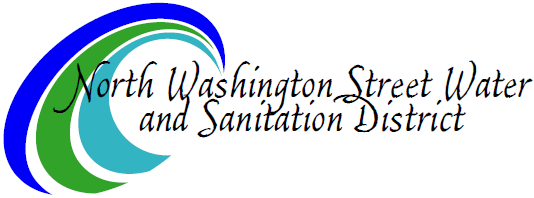Backflows / Cross Connections Information
Introducing North Washington Street Water And Sanitation District New Backflow Submission Program
North Washington Street Water and Sanitation District would like to introduce you to our new Backflow Assembly Testers Digital Registration Submission Program. We are no longer accepting backflow test and maintenance reports through email or fax. The tester/administrator must register and submit reports through the new program NWSWSD/SwiftComply.
- To register please click here Registration/Submission
- For assistance contact support@swiftcomply.com
Cross-Connection Control and Backflow Prevention Program
The Colorado Department of Public Health and environmental regulates drinking water quality and standards. The Colorado Primary Drinking Water Regulations (Section 11.39) outlines the requirements for the North Washington Street water and Sanitation District, Cross-Connection Control and Backflow Prevention Program.
All commercial, Industrial, domestic, irrigation and fire line services are required to have an approved backflow prevention assembly installed. All customer with an auxiliary water supply, such as a well or a pond, are also required to install and maintain backflow prevention assemblies.
North Washington Street Water and Sanitation District’s Cross-Connection Control and Backflow Prevention Program protects the water supply from contaminants that could, under certain circumstances, be drawn into the public supply from private properties.
In addition to installing an assembly, the water customer must have the assembly tested upon installation and annually thereafter by a certified backflow prevention assembly tester.
Backflow
Backflow is the unwanted flow of water or other liquids, mixtures, gases or substances into the drinking water supply.
There are two main ways backflow can occur:
- Backsiphonage occurs when there is a negative pressure in the water distribution system, which draws the water from a private water system into the public water system. This can occur at any time, such as during a water main break or during a large firefighting effort.
- Backpressure occurs when the pressure is a private water system exceeds the pressure in the public water distribution lines that can cause the normal flow to reverse. A pump used to increase the water pressure within a building’s plumbing system to reach a higher floor might cause this.
Cross Connection
Cross-connections are actual or potential connections between the public water supply and any others system that could accidentally introduce a contaminant back into the public water supply
According to the Environmental Protection Agency, cross connections can be serious public health hazard if they do not have adequate backflow prevention assemblies installed. There are numerous, well–documented cases in which cross-connection have been responsible for the contamination of drinking water that, when consumed, caused the spread of sickness or disease.
Where can Cross-Connections Occur?
Cross-connections can occur at many points throughout a distribution system and a community’s plumbing infrastructure. Cross-connections can be identified by looking for physical interconnections (or arrangements) between a customer’s plumbing and the water system. Some specific examples of backflow incidents that can occur are:
- Lawn chemicals backflowing (backsiphoning) through a garden hose into indoor plumbing and potentially into the distribution system.
- Backsiphonage of “blue water” from a toilet into a building’s water supply.
- Carbonated water from a restaurant’s soda dispenser entering a water system due to back pressure.
- Backsiphonage of chemicals from industrial buildings into distribution system mains.
- Backflow of boiler corrosion control chemicals into an office building’s water supply.
Backflow Prevention Assemblies
A backflow prevention assembly is a mechanical valve arrangement designed to prevent the reversal of the flow of water once it has passed through the valve.
Like any mechanical device, a backflow prevention assembly requires maintenance and annual testing. There are different types of backflow prevention assemblies required for different uses and different degrees of hazard. A certified backflow technician can help determine what backflow devices are suitable for your situation.
There are no exemptions or grandfathering in of backflow prevention assembly requirements.
Approved Backflow Prevention
Backflow prevention assemblies installed within North Washington Street Water and Sanitation District's distribution system must be approved by the University of Southern California’s Foundation for Cross-Connection Control and Hydraulic Research, otherwise known as being USC-approved. Check with your backflow prevention assembly manufacturer or the product specification sheets to verify that the assembly is USC-approved. You must also confirm the assembly is approved in the orientation for which it is being installed (horizontal, vertical, etc.).
For more information about backflows and cross-connections, you can go the Colorado Department of Public Health & Environmental (Regulation 11.39 Backflow and Cross-connection Control Guide). Click on the attached pdf file below to view the Regulation 11.39 Backflow and Cross-connection Control Guide.
Regulation 11.39 Backflow and Cross-connection Control Guide